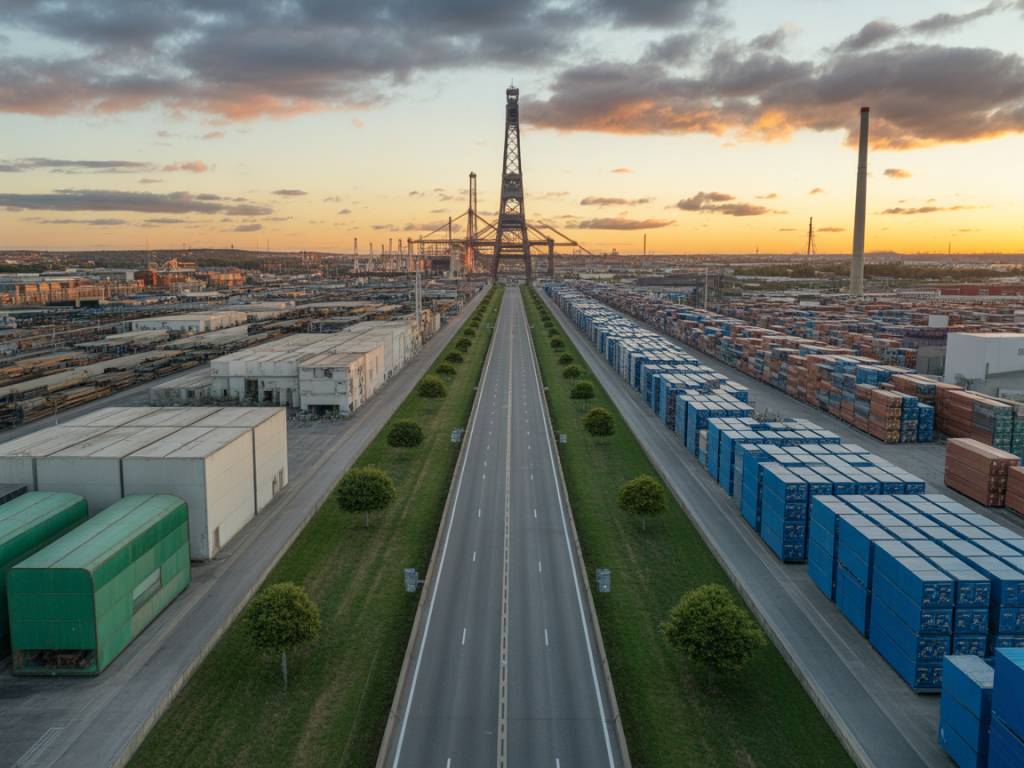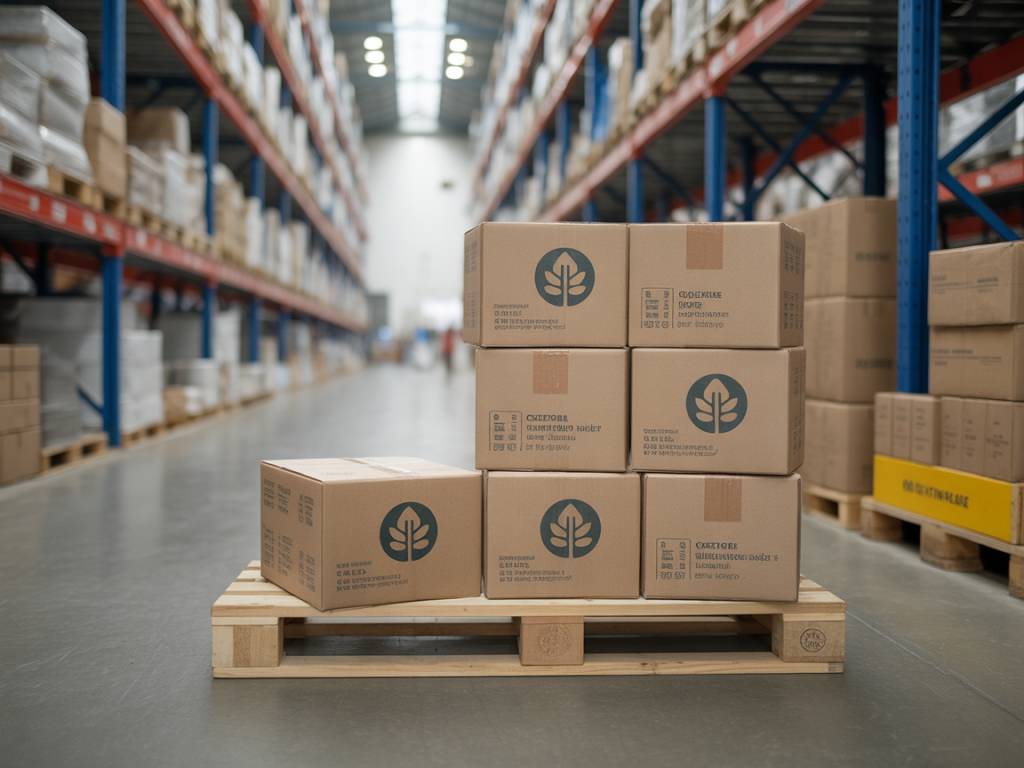Understanding Sustainability in Industrial Manufacturing and Logistics
“Sustainability” is one of those words that’s omnipresent in boardrooms, strategy decks, and ESG reports. But what does it tangibly mean for industrial manufacturing and logistics operators? Beyond the buzz, the term encompasses a fundamental rethinking of how goods are produced, stored, and transported—aiming to reduce environmental impact while preserving competitiveness.
In an era where energy prices fluctuate wildly, regulations tighten, and customers become more climate-conscious, the pressure is more than reputational—it’s operational. But how are companies in the industrial and logistics sectors responding, and what does a “sustainable” supply chain actually look like on the ground?
Sustainability: More Than Just Carbon Footprints
At its core, sustainability in manufacturing and logistics refers to minimizing the ecological and social impact of industrial operations across the value chain. That includes:
- Reducing greenhouse gas emissions
- Improving energy and resource efficiency
- Designing out waste and enabling circularity
- Ensuring social responsibility in labor and sourcing practices
In practice, this broad definition breaks down into concrete actions such as retrofitting aging production lines with energy-efficient motors, optimizing truck routes to cut diesel consumption, or sourcing raw materials locally to reduce freight emissions. Sustainability isn’t a department—it’s an operational mindset woven across procurement, production planning, logistics, and facilities management.
Transition Drivers: Regulation, Markets, and Margin
Previously viewed as a “nice-to-have,” sustainability is now being driven by three converging forces:
- Regulation: From the EU’s Corporate Sustainability Reporting Directive (CSRD) to Scope 3 emissions tracking, policymakers are increasingly holding companies accountable across the chain.
- Market Demand: B2B buyers are questioning the carbon footprint of purchased products; many include sustainability performance in their RFP criteria.
- Operational Efficiency: Energy and resource efficiency is often code for cost savings. In logistics, for example, better load planning or warehouse lighting upgrades often yield double-digit returns on investment.
In a recent survey by Capgemini, 62% of industrial manufacturers identified sustainability as a major competitive differentiator, up from just 39% five years ago. The shift is no longer aspirational—it’s strategic.
Inside the Factory: What a Sustainable Plant Looks Like
Modern sustainable factories are quietly emerging across Europe and North America. The Siemens plant in Amberg, Germany, for instance, is often cited as a model. It operates using 75% renewable power, recycles 99% of its production waste, and digitally monitors all equipment to optimize energy usage in real time.
Common sustainability interventions in manufacturing include:
- Energy Optimization: Installation of intelligent HVAC systems, LED lighting, and solar panels
- Process Innovation: Adoption of additive manufacturing (3D printing) to reduce material waste
- Resource Management: Closed-loop water systems and material reclamation for reuse
- Digital Twins: Virtual modeling of factory operations to simulate and minimize environmental impact before implementation
That said, modernizing existing plants poses challenges. Unlike new greenfield projects, brownfield retrofits demand careful cost-benefit analysis. In France, a Tier-1 automotive supplier recently told us they delayed introducing induction heating for metal treatment—not for lack of budget, but because stable renewable energy supply in their region was unreliable. Hardware is only half the equation—energy infrastructure and planning are equally critical.
Greening the Supply Chain: The Logistics Piece
If the factory is where sustainability begins, logistics is where it scales. Freight transport still accounts for roughly 8% of global CO₂ emissions, according to the IEA. Decarbonizing this link is essential—and particularly complex due to fragmentation in the sector.
Companies are adopting several strategies:
- Modal Shifts: Prioritizing rail or inland waterways over road freight where feasible
- Fleet Renewal: Transitioning to electric or biofuel-powered trucks (although infrastructure and range remain barriers)
- Route Optimization: Use of AI and telematics to minimize empty runs and avoid congestion zones
- Green Warehousing: LEED-certified buildings, solar-powered logistics hubs, and smart inventory systems that reduce overstocking
Take the example of DB Schenker in the Netherlands. Their Amsterdam distribution center is 100% powered by solar energy, with an autonomous EV fleet running last-mile deliveries in the city. Their investment not only reduced emission but also improved delivery reliability in low-emission zones introduced by municipal authorities.
However, this transformation is uneven. In Eastern Europe and parts of Africa, diesel is still king, and infrastructure for alternative fuels is rudimentary. Global manufacturers must thus tailor sustainability interventions regionally—one-size-fits-all doesn’t apply.
The Human Factor: Skills and Culture Shift
Machines and processes can only take you so far. A genuinely sustainable manufacturing and logistics operation depends on people—and the ability to shift mindsets.
That means upskilling shop-floor workers to operate green technologies, training planners to integrate sustainability metrics into KPIs, and educating suppliers about shared goals. More broadly, sustainability KPIs need to carry equal weight alongside traditional ones like cost, quality, and delivery.
Michelin, for instance, incorporates environmental criteria into its supplier scorecards. Partners are evaluated not just on financial and operational performance, but also carbon intensity and social compliance. This sends a clear signal: sustainability isn’t optional—it’s part of the contract.
Measuring Progress: Metrics That Matter
“You can’t manage what you don’t measure”—a truism that applies perfectly to green manufacturing and logistics. But measuring sustainability is often more nuanced than many expect. What should be tracked—and how frequently?
Key metrics include:
- CO₂ emissions per unit produced or shipped
- Water consumption per process cycle
- Percentage of waste diverted from landfill
- Energy intensity (kWh per production hour)
- Supplier environmental performance scores
Advanced companies are now moving beyond annual ESG reports and incorporating sustainability into daily dashboards. A logistics operator in Northern Italy shows real-time CO₂ avoidance next to its route planner, influencing decisions dynamically—not retroactively.
Still, the challenge lies in calculating indirect emissions—particularly Scope 3. Collaborating with suppliers and digital platforms like EcoVadis or CarbonChain is becoming indispensable to gain full visibility.
Is Sustainability Profitable? Spoiler: Yes, If Done Right
Let’s address the elephant in the room—does sustainable manufacturing and distribution hurt the bottom line? Not necessarily. In many cases, it enhances it.
A McKinsey study found that companies with robust sustainability programs show 20% lower supply chain costs on average. In logistics, optimized routing, reduced energy bills, and minimized waste often deliver a positive ROI within 3–5 years.
The catch? ROI requires strategic alignment. Piecemeal projects—like retrofitting lighting without optimizing process flow—rarely deliver holistic gains. Instead, best-in-class firms link sustainability directly to operational excellence.
One food manufacturer interviewed during the CFIA (Carrefour des Fournisseurs de l’Industrie Agroalimentaire) in Rennes shared how a lean energy program in their cold-chain warehouse cut electricity use by 18%, reduced spoilage, and—bonus—improved worker safety through better visibility. Sustainability? Yes. Profitability? Absolutely.
Looking Ahead: What’s Next?
The path to sustainability in industrial manufacturing and logistics is not linear—it’s iterative, tailored, and often demanding. Yet it’s also inevitable. Regulatory frameworks will only become stricter. Customers will continue shifting preferences. And perhaps most importantly, energy and material efficiency will remain levers for resilience in volatile markets.
Companies that approach sustainability not as a constraint but a capability will outpace those who resist the tide. Just as the lean revolution reshaped manufacturing in the 1980s, the sustainability transformation is redefining the playbook today. The sooner an organization sees it as a source of competitive advantage—not just compliance—the better positioned it will be for the decades ahead.




